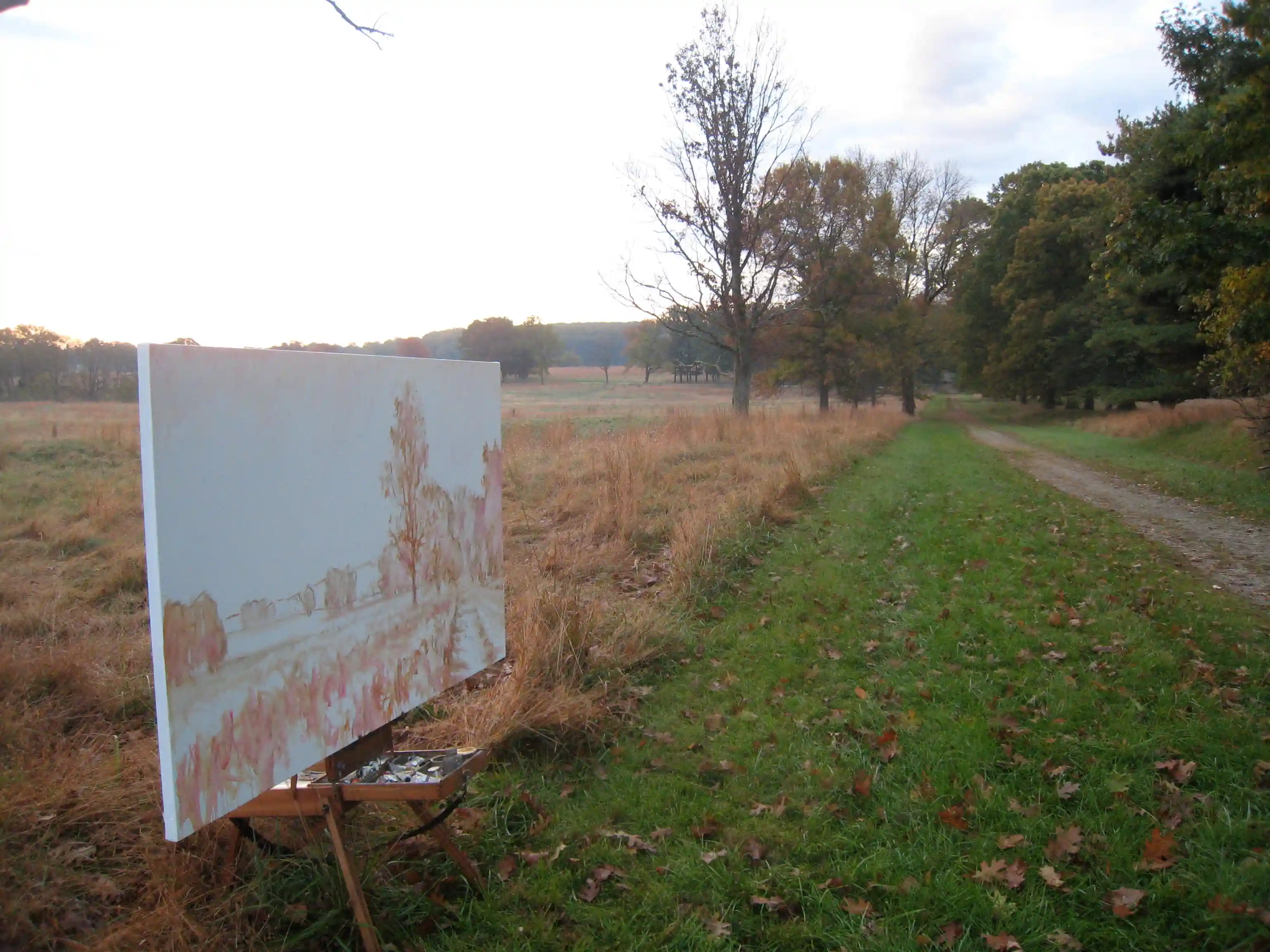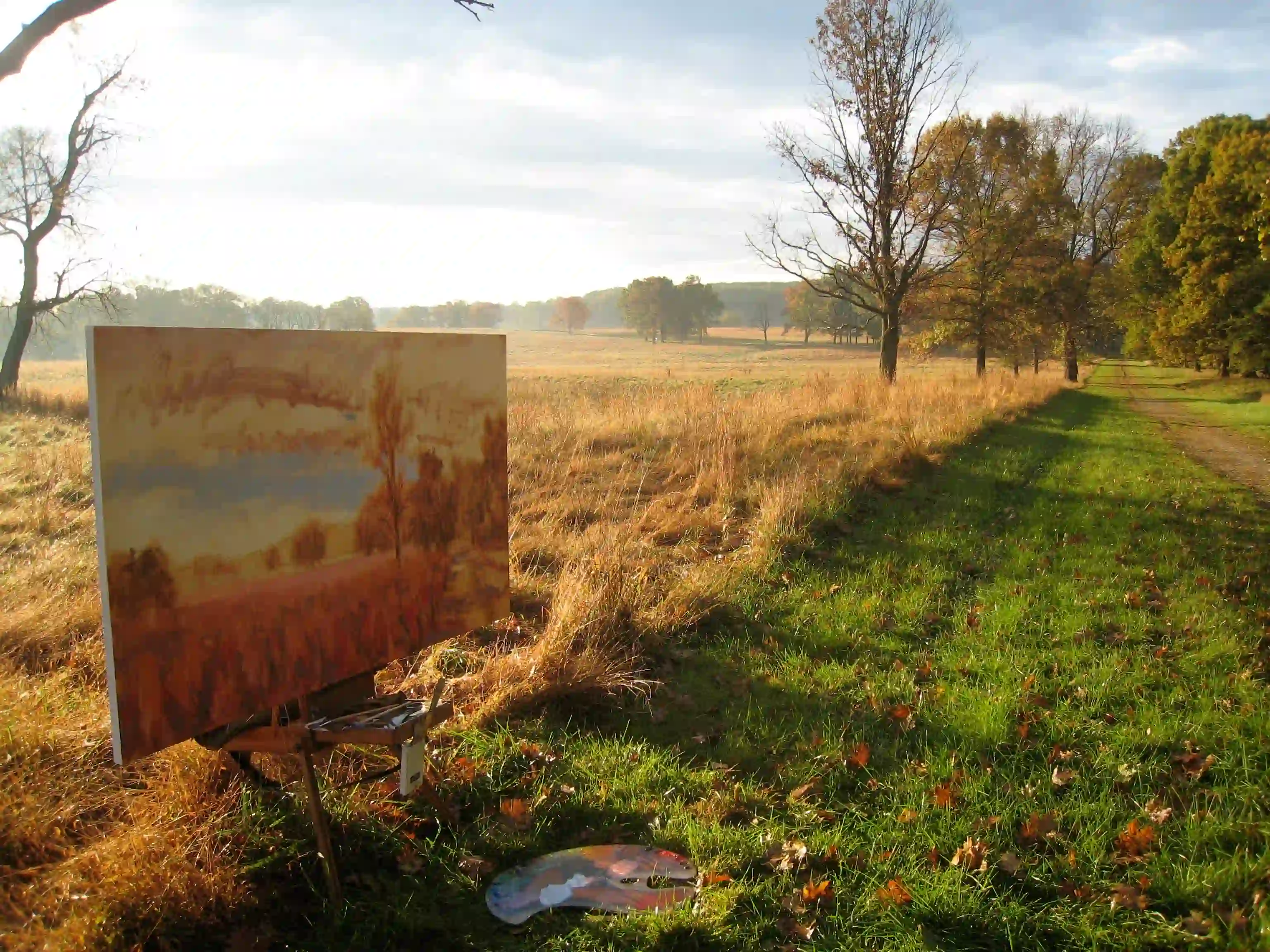Clay Johnson: Brushing Through Creativity
- James Fitch
- Dec 28, 2023
- 7 min read
Updated: Dec 29, 2023
Images provided by Clay Johnson

Welcome to our artist spotlight series! In this edition, we have the privilege of sitting with Clay Johnson, a brilliant artist whose canvas comes to life with vibrant colors and captivating strokes. Join us as we delve into the world of artistry and inspiration.
Rice Museum: Can you share a little about your artistic journey? How did you discover your passion for painting, and what path led you to where you are today?
Clay Johnson: I have been interested in art since my early teens. I had no evident, innate skills that I considered "artistic," so I did not think of myself this way. It took me a few years to realize that I needed to practice and learn these skills. I began with black & white photography, as my drawing skills were weak and my painting ability nonexistent. This was before digital, and darkroom work was a lengthy process just to see what you had captured. This helped me understand composition and value, but I still needed to satisfy my curiosity for color and my desire for the immediacy and directness of drawing and painting.
RM: Your artwork often showcases a unique blend of styles. How do you approach mixing different techniques, and what inspires you to experiment with various artistic influences?
CJ: I do not usually think in terms of "techniques" or "styles." I gather the knowledge and skills to manipulate my materials and control my hands. We practice and exercise our imagination just like any athlete exercises any other muscle to make it stronger. This is technique. Practicing technique is how we accustom ourselves to our craft's material parameters and restrictions. Then we can play.
Art history is filled with skillful excellence. It has been said that we stand on the shoulders of giants. Thousands of years of art inform and condition our personal approach, like it or not. We do not need much inspiration to try things on to fit, just some judgment (another muscle requiring exercise.) Even a bad fit is not time wasted; it is an education.

RM: Colors play a significant role in your paintings. Could you elaborate on your color selection process? How do you believe colors contribute to the emotions your artwork evokes?
CJ: Sometimes, I fall in love with a new pigment. Sometimes, I fall in lust. Sometimes, I just play with a color and see where it goes. Some pigments naturally belong together, and others don't play well with their neighbors. Some are outright thugs on the palette (looking at you, Pthalo Blue!)
I am promiscuous as to my favorites. A momentary fancy can turn my attention, but I choose to have all the paints I can get that are rated stable and lightfast. Many pigments are seldom used; some I might not like, but I still have them. Just another tool in the toolbox waiting for that occasion when nothing else will do the job.

RM: Many artists develop rituals or routines to create a creative mindset. What do you think is your approach to preparing yourself mentally before starting a new painting?
CJ: I like to decide ahead of time where to paint. Too much time has been wasted wandering around, pacing back and forth, looking for the perfect spot while getting only tired and frustrated. Too often have I painted a fine tree only to decide it needs to be three inches to the left, just as my perfect light changes. Establishing a general compositional idea, first, is a huge help. I might later change my mind, but I am one step ahead just to have a starting place. Drawings, compositional thumbnails, photographs, or an underpainting can all work. It is somewhere to begin so that once on location, I can go right to my spot and concentrate on color, atmosphere, and the more fleeting aspects of the experience.
After I am done painting for the morning, I am probably tired, thirsty, upset, hungry, and frustrated. I pack up my things and put everything out of my mind, but I have not yet gone home. Regardless of how awful my morning attempt might be, I have nevertheless spent a couple of hours trying to sync my eyes, hands, and imagination. This state of mind is not to be wasted. It is useful to spend a few minutes pacing back and forth, looking again at my site and the surrounding places. The better composition is often ten feet away, but I just saw it now. This is often how I discover tomorrow's painting site.
I cannot just "turn on" creative inspiration. Instead, a familiar procedure or routine will provide me a running start of momentum. This gets me occupied and busy with the work. While busy painting, I might forget myself and start playing.

RM: Landscapes, portraits, abstracts - your portfolio is quite diverse. Do you have a favorite subject to paint? What draws you to that particular subject?
CJ: I paint primarily landscapes, which means a deep space. Landscape is one of the most universally accessible subjects, viscerally understandable and familiar. Literally a common ground. Human-modified spaces add to this a rich layer of visual complexity and narrative.
Atmosphere and distance affect color, creating the perception of space and atmosphere. This is endlessly fascinating to me.
Paintings (above) In progress.
RM: The interplay of light and shadow is a remarkable aspect of your work. Could you show how you achieve such depth and dimension in your paintings?
CJ: I have no magic formula for such things. Artists have been doing this and showing us how for hundreds of years. The tricky part is not just creating depth but guiding the eye into and around the spaces created.
RM: Artists often encounter creative blocks. How do you overcome these hurdles and find inspiration when you feel stuck in your artistic journey?
CJ: I cannot think my way out of these difficulties. If I wait for inspiration, I will wait a long time. I can only paint into, and perhaps past this chaos. It does not resolve in one's mind but through one's brush. I begin the process, proceed with the work, and get lost in the crafting. I get comfortable enough with the chaos that playfulness can happen. One cannot really look for inspiration. It will find you while you are busy at work.
RM: Collaboration between artists and other creatives can lead to fascinating projects. Have you ever collaborated with other artists or professionals? If so, how did those experiences influence your artistic perspective?
CJ: Creative collaboration is often a mixed blessing. It may be more common in music or cinema, where divisions of labor are more straightforward, such as with composers & lyricists. We think of Rodgers & Hammerstein, Lennon & McCartney, or even Simon & Garfunkel. Sometimes, good music was at the cost of a good friendship. Egos will clash, and they are only occasionally productive.
Any commission is, of course, also a collaboration or at least a negotiation. An entire industry of talented illustrators and designers exists to fill this need, but the idea of directing an artwork by committee vote will drive many creatives crazy. One needs to know one's limits.
Sometimes, the most critical collaborations happen privately with a trusted spouse or friend, where options, difficulties, and fears can be bounced around without restraint or hesitation. This is a valuable resource for those lucky enough to have it.

RM: Your artwork evokes strong emotions and connections in viewers. What do you hope people take away from your paintings, and how do you create such a powerful resonance through your art?
CJ: Our heads are filled with words. It makes me sad when I see an exhibition of powerful paintings attended by a throng of people with their attention focused only on the blurbs and not the work. Of course, the written information is valuable and enlightening, but this is different from the work itself. Artists made visual statements fifty thousand years before written language was invented. This is something primal, different from thoughts, concepts, and narratives. We sometimes need to remember how to just see.
RM: The art world has been influenced by technology and digital platforms. How have you navigated this intersection of traditional artistry and modern mediums? What role do you see technology playing in the future of art?
CJ: Fifty thousand years ago, artists were painting on cave walls with red and yellow ochers. We still use ocher, and almost as well. The invention of things like paper and the printing press were substantial technological advancements that changed the world due to the relative ease of making and distributing written words and pictures. The development of perspective drawing in the Renaissance changed how we perceive and depict space. Modern science has brought us almost all of the brilliant colors we now take entirely for granted, while digital cameras in everybody's phone make image capture and dissemination easy, universal, cheap, and mundane. Artists have always been at the forefront of using any available technology to imagine, create, disseminate, display, and market their work. We are makers and love to play with this stuff for fun and profit. Technology can help an artist become more focused, productive, profitable, and famous. Technology can also be a distraction. Does it make us better artists than those cave painters? Ask me in another fifty thousand years.

RM: What advice would you give a younger or beginner artist that would help them navigate the art process?
CJ: There are many easier ways to make money than being an artist. Many easier ways to be successful. The competition in this business has names like DaVinci, Rembrandt, and Matisse. Forget about trying to develop a style. (It will set you; you will not create it.) Get a sketchbook and draw. Every day. Or do watercolors or work on your iPad with Illustrator. Something, anything. Just make things. Develop your craft until it is second nature, like an experienced twelve-year-old kid on a bike.
Many of us look at drawings by someone like Michelangelo, think, "I can't do that," and are discouraged. Drawing is not about having a stack of elegant, salable commodities. It aims to shorten the distance between your ideas, hands, and imagination. Even a rudimentary practice of stick-figure drawing will get things down on paper where the artist's imagination can see it and own it. Like any muscle, the imagination only becomes strong with hard use.
Follow Clay Johnson on Instagram
Visit the Rice Museum's Prevost Art Gallery to view our current exhibition, "Waccamaw Neck Arts Alliance Exhibition." Now on exhibit November 11 – January 13, 2023. The Rice Museum is open from 11 AM – 4 PM, Tuesday to Saturday.




Clay was at the PAFA when I was there. He used to get up really early every day and paint the morning light. was astonished at his discipline and dedication. Seeing his paintings online in recent years has shown that he has achieved brilliance.
Engaging questions and answers! Clay's deep and articulate comments are interesting and informative.... as colorful as his paintings!
That was an engaging interview.
So well spoken! Love the paintings.
Beautiful work!